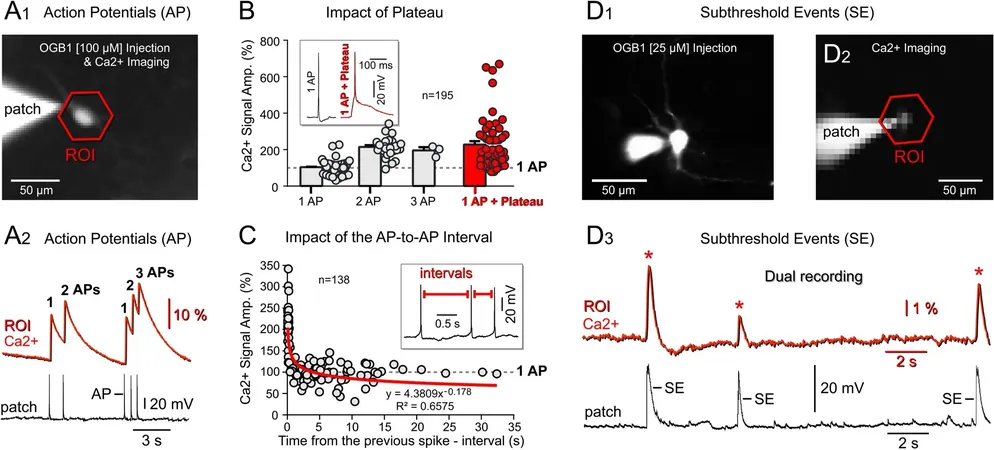
Shocking Discovery: Optical Methods May Inflate Neuronal Activity Measurements!
2024-10-07
Author: Sarah
Introduction
In a groundbreaking revelation, neuroscientists at the University of Connecticut have discovered that the optical methods used to measure neuronal signaling may be more misleading than once thought. In a recent study published in Scientific Reports, they uncovered some startling inaccuracies that could reshape how we understand brain activity.
Understanding the Brain's Communication
The human brain is an intricate network of billions of cells, predominantly neurons, which communicate via electrical signals – the physical embodiment of our thoughts. Traditional methods for observing these signals have included two primary techniques: the first involves inserting an electrical probe directly into a single neuron, providing precise but limited data; the second utilizes a special fluorescent dye that lights up when calcium ions fluctuate, enabling researchers to monitor larger groups of neurons simultaneously.
The Study at UConn’s Antic Laboratory
At UConn’s Antic Laboratory, researchers Katarina Milicevic, Violetta Ivanova, and their team endeavored to evaluate how reliable these optical measurements are, particularly in the context of Alzheimer's disease, which severely impacts neuronal communication.
Unexpected Findings
Conducting their investigation, the team meticulously inserted electrical leads into individual neurons to capture the frequency of their natural signaling. Alongside this, they employed camera technology to record the corresponding optical signals. However, their findings were unexpected and concerning.
They discovered that the brightness of the flashes obtained from the optical method often outpaced actual neuronal signaling. Subtle waves of calcium ions could trigger the dye to emit light without sufficient electrical activity to constitute a genuine nerve impulse. These minor fluctuations, termed “depolarization plateaus” by the researchers, misrepresented the neurons’ actual signaling activity.
Implications of the Discovery
In a staggering twist, the combination of a single nerve impulse with one of these plateau potentials yielded flashes two to three times more intense than regular signaling events, misleading scientists to think multiple impulses had occurred in rapid succession when, in fact, it was only one.
Milicevic remarked, “It was previously thought that neuron calcium signaling was simply (linearly) related to the generation of nerve impulses. It’s not. It can be boosted by underlying plateau potentials. This makes measuring neuronal activity with optics much trickier.”
Future Directions
To rectify this issue, the UConn team is now enhancing their study methodologies by rapidly capturing both electrical and optical signals at double the speed. This new approach aims to clarify whether they are missing additional bursts of neuronal activity crucial for understanding cognitive functions and the impact of diseases like Alzheimer’s.
Conclusion
As these revelations unfold, the scientific community will need to reevaluate the tools and methodologies employed in neuroscience. This could very well be a pivotal moment in the quest to decipher the complex web of neuronal communication, offering fresh insights into how our thoughts manifest within the tangled pathways of our brains. Don’t miss out on future updates!



 Brasil (PT)
Brasil (PT)
 Canada (EN)
Canada (EN)
 Chile (ES)
Chile (ES)
 España (ES)
España (ES)
 France (FR)
France (FR)
 Hong Kong (EN)
Hong Kong (EN)
 Italia (IT)
Italia (IT)
 日本 (JA)
日本 (JA)
 Magyarország (HU)
Magyarország (HU)
 Norge (NO)
Norge (NO)
 Polska (PL)
Polska (PL)
 Schweiz (DE)
Schweiz (DE)
 Singapore (EN)
Singapore (EN)
 Sverige (SV)
Sverige (SV)
 Suomi (FI)
Suomi (FI)
 Türkiye (TR)
Türkiye (TR)